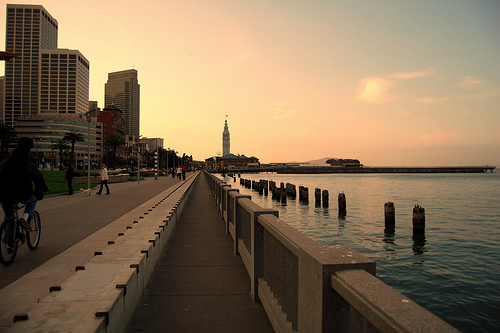Should cities tear down urban freeways?


Freeways are great -- for cars. But when they cut through urban centers they can not only be an eye sore, but negatively affect walkability and the character of neighborhoods. Many U.S. cities agree, and that's why there's been a push recently to tear down these major roads. NPR reports:
Half a century after cities put up freeways, many of those roads are reaching the end of their useful lives. But instead of replacing them, a growing number of cities are thinking it makes more sense just to tear them down.
But cities are not just doing this to improve livability. Replacing freeways is expensive and cities just don't think the benefits match the cost of rebuilding.
Milwaukee removed a freeway spur for $30 million. Officials estimated it would have cost between $50 million and $80 million to fix that roadway. That inspired Akron, Ohio, officials to study what to do with an aging six-lane freeway that few motorists use.
...
This is the city planner's dream: Take out an underused freeway, open up land for new businesses or parks and magically more workers will move back to the city and property values will soar. So far, though, the results have been mixed.
Milwaukee hasn't seen as much development as proponents hoped after that city took down a spur of the Park East Freeway. But San Francisco revitalized an entire neighborhood by taking down the Embarcadero Freeway in the early 1990s.
Over at The Infrastructurist, Eric Jaffe doesn't agree that the demolishing the Park East Freeway was failure.
The savings were significant, and so was the economic opportunity. Demolishing the highway freed up 24 acres of land for commercial development. Some parcels of land in the former freeway corridor indeed remain undeveloped, as NPR reports — a failure attributed by some officials to poor regulations. Still, as this interactive map of the development area shows, a fair amount of land is undergoing impressive transformation. That includes a $54 million, 30-story apartment complex that broke ground earlier this month.
Certainly Milwaukee would have preferred that the corridor redevelop rapidly, instead of slowly. Having said that, the long-term benefits of removing Park East still appear strong, particularly with regard to traffic flow. The great fear of opponents of highway removal is that congestion will increase. That has not happened, says John Norquist, the former mayor who led the effort to demolish Park East.
It may seem counter-intuitive that tearing down a freeway would lead alleviate congestion. But mathematicians believe this has to do with a theorem called Braess's paradox. Basically, the idea is that adding a major road, like a freeway, makes that the best route. The problem is, everyone takes that route. When a freeway is torn down, traffic is dispersed onto other alternative routes, and overall congestion is alleviated. Of course it's a theorem doesn't hold true in every case.
But check out these amazing examples of cities that put Braess's paradox to the test.
Photo 1: Roshan Vyas/Flickr
Photo 2: Telstar Logistics/Flickr
This post was originally published on Smartplanet.com